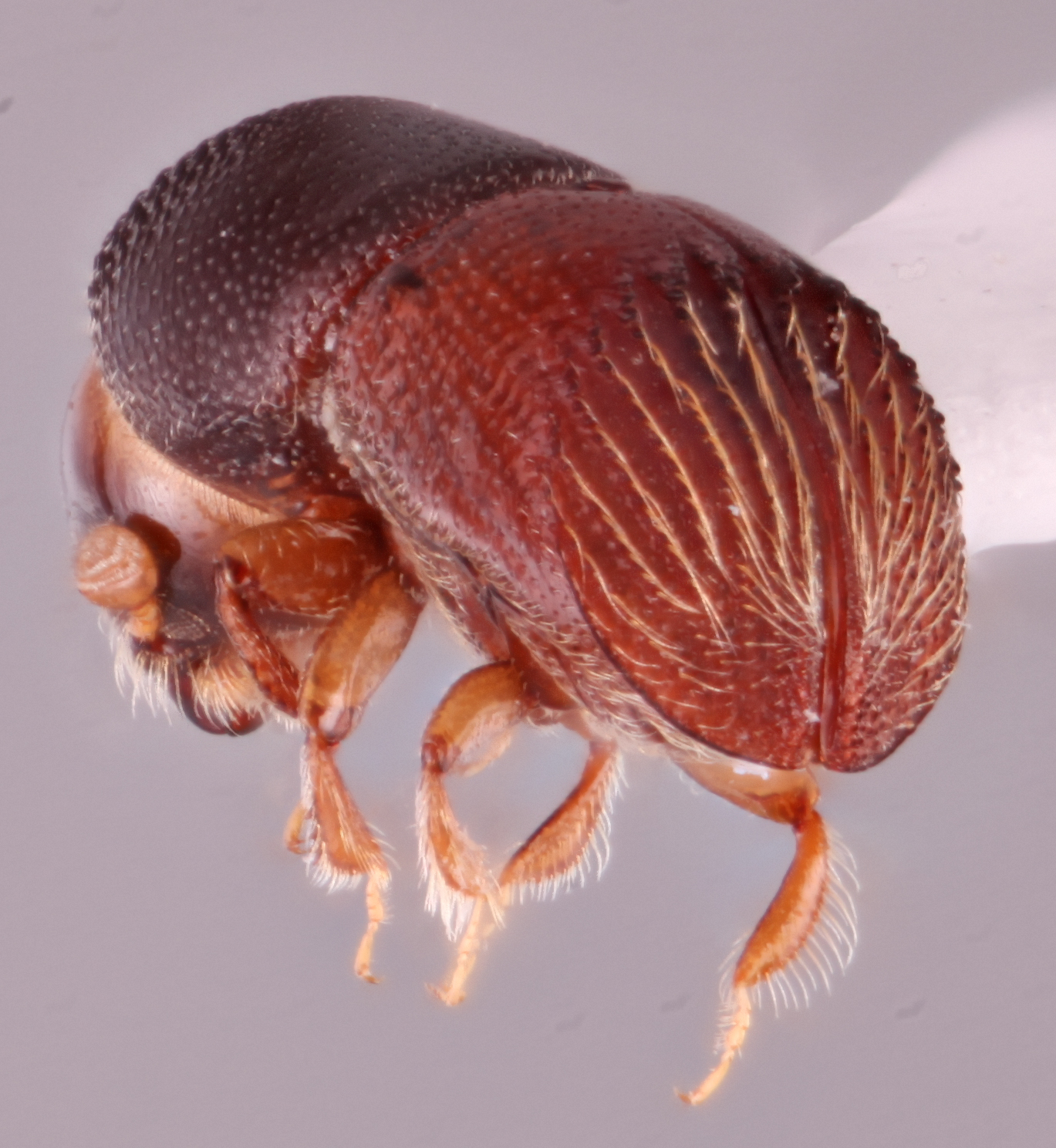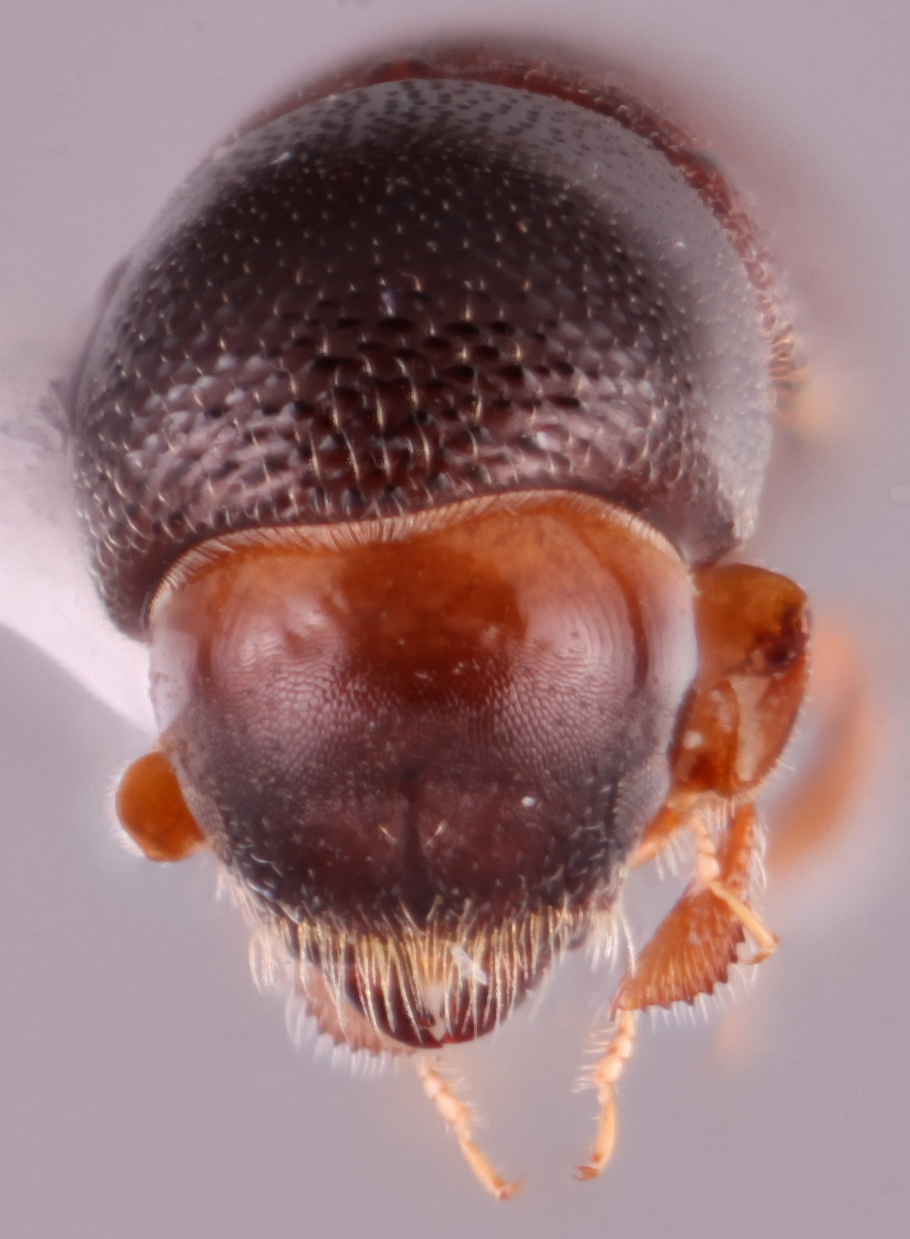Arixyleborus leprosulus
|
Arixyleborus leprosulus lateral; S.M. Smith |
|
Arixyleborus leprosulus dorsal; S.M. Smith |
|
Arixyleborus leprosulus declivity; S.M. Smith |
|
Arixyleborus leprosulus frontal; S.M. Smith |
Taxonomic history
Arixyleborus leprosulus Schedl, 1953b: 300.
Synonyms
Arixyleborus aralidii Nunberg, 1961: 618. Schedl, 1962b: 699.
Diagnosis
1.9−2.0 mm long (mean = 1.94 mm; n = 5); 2.38−2.5 times as long as wide. This species is distinguished by the protibiaprotibia:
tibia of the first pair of legs
posteriorposterior:
toward the rear end; opposite of anterior
 face inflatedinflated:
face inflatedinflated:
blown up; distended
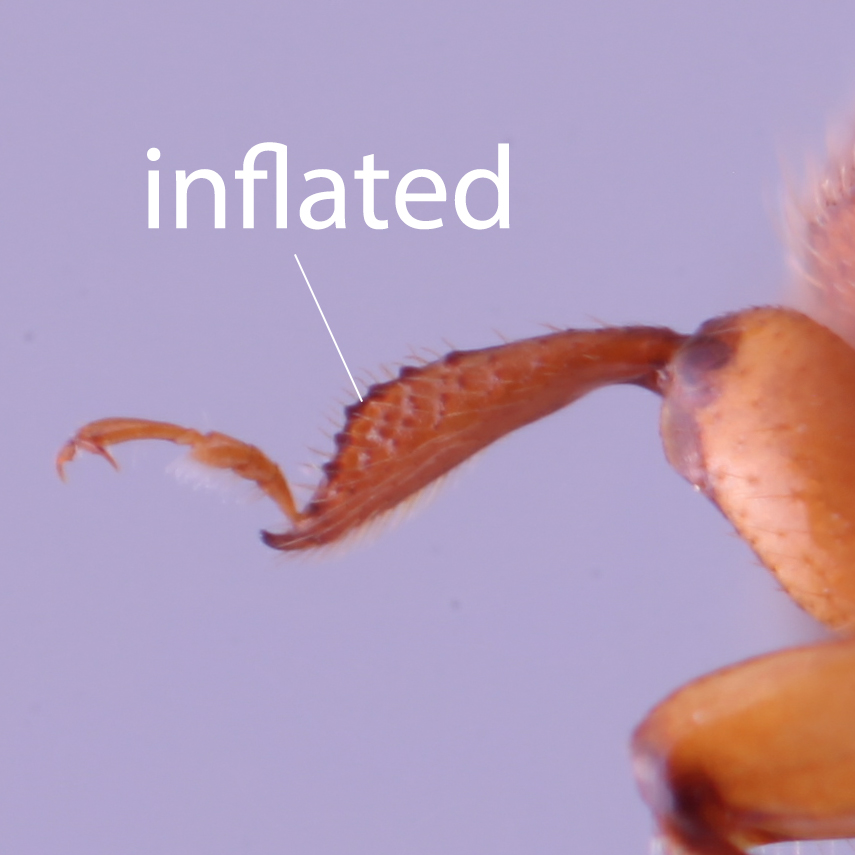 and granulate; antennalantennal:
and granulate; antennalantennal:
pertaining to the antennae
club broader than tall; posterolateralposterolateral:
relating to end of the side part/portion
 carinacarina:
carinacarina:
an elevated ridge or keel, not necessarily high or acute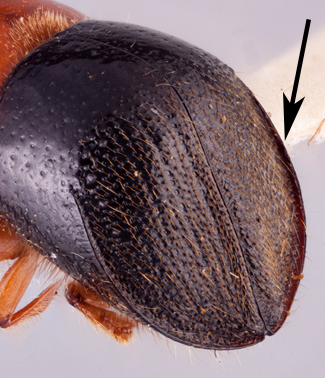 costate to interstriaeinterstria:
costate to interstriaeinterstria:
longitudinal spaces along the elytra between the striae, which is not as<br />
impressed and bear smaller punctures.
 7; elytraelytron:
7; elytraelytron:
the two sclerotized forewings of beetles that protect and cover the flight wings
obliquely truncatetruncate:
appearing cut off or suddenly shortened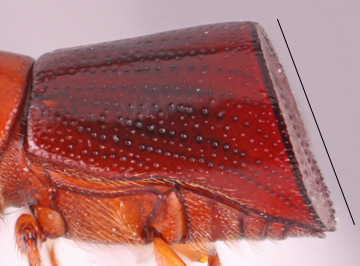 , boundary between elytralelytral:
, boundary between elytralelytral:
pertaining to the elytra
discdisc:
the flat central upper surface of any body part (e.g. pronotum and elytra) and declivitydeclivity:
and declivitydeclivity:
downward slope of either the pronotum or elytra
 distinct; elytral declivitaldeclivital:
distinct; elytral declivitaldeclivital:
pertaining to the elytral declivity
face without strial furrows and interstrial ridges; declivitaldeclivital:
pertaining to the elytral declivity
interstriae setose, setaeseta:
small hair-like or scale-like structure
long, hair-like, recumbentrecumbent:
pertaining to setae that are flat against the cuticle
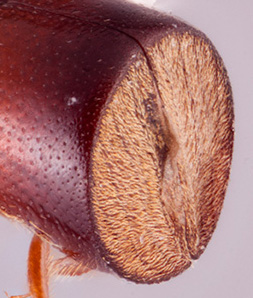 , as long as 1.5 strial widths.
, as long as 1.5 strial widths.
May be confused with
Distribution
Brunei, West Malaysia, Thailand
Host plants
recorded from Dryobalanops and Shorea (Dipterocarpaceae), Castanopsis (Fagaceae) and Palaquium (Sapotaceae) (Browne 1961bBrowne 1961b:
Browne FG. 1961b. The biology of Malayan Scolytidae and Platypodidae. Malayan Forest Records 22: 1-255.)
DNA data
specimens not available for sequencing



